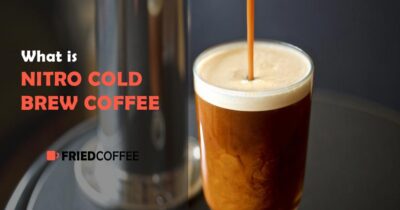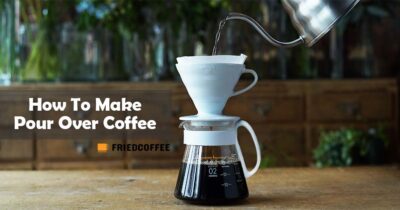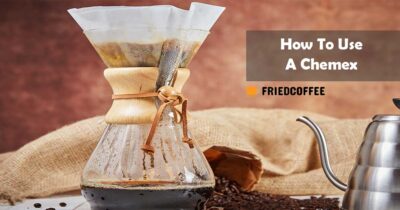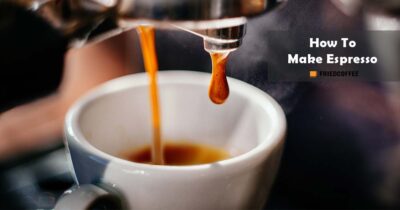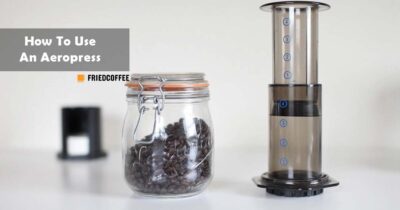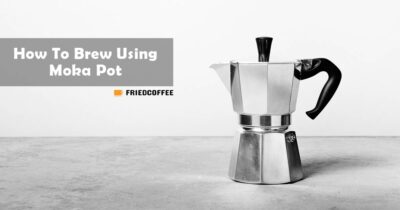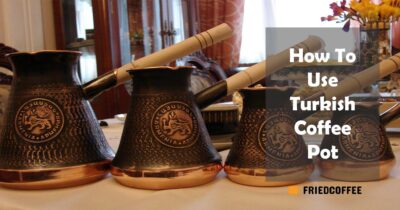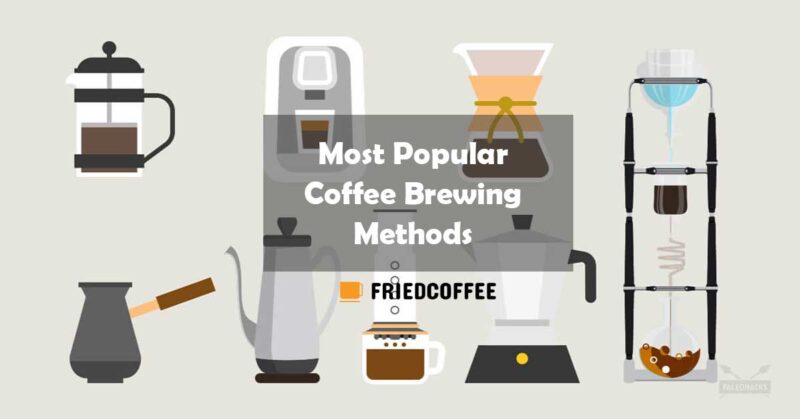
Literally, there are dozens of different ways to brew coffee. Every corner of the world has its own set of preferred methods for brewing up this popular beverage. For example, in America, a “coffee” is usually, a Drip Coffee, while in Italy it’s an Espresso, and in Turkey, it’s Turkish coffee.
Coffee is the ultimate beverage popular in every corner of the world. It wakes up many in the morning, brings smiles to people’s faces when you take a coffee break.
Steps from Green Bean to Coffee Cup
Before we move on to the various brewing methods, let’s have a glance at the whole process.
- Green Beans: The beans are pricked from plants and are processed to turn into green coffee beans. These beans then go to various coffee companies and roasters.
- Roasting: The green beans are then roasted to various levels, in brief steps – light, medium, or dark. Though there are many other roast levels, we are just picking the very general ones. This process brings up the real flavor and aroma of the beans. It also increases the solubility of beans for brewing.
- Grinding: The next step is grinding these beans to fine particles finally preparing them for brewing. With a coffee grinder, we can grind the beans into grounds of various sizes. The size varies from coarser to extra fine particles as every method works with a different size. For example, the French press uses coarser grounds whereas espresso needs fine.
- Brewing: Finally, after grinding the beans, the last step is brewing. This again broadly divides into two – regular coffee or espresso. Regular coffee is basically pouring hot water on coffee grounds which results in a brown liquid called regular or drip coffee. In espresso, fine ground coffee is tightly packed into a puck and highly pressurized hot water near boiling point is passed through. The outcome is espresso. This is also a brown liquid, but is more concentrated and has a yellowish-white foamy layer on top called crema.
Espresso has very minimal methods like Moka pots or simply the espresso machines but a regular coffee has way many.
This is all how it goes and we hope things till now sound quite easy. Let’s now dig a little bit further. The roasting levels are not just three but there are more sub-levels into each. Also, the grind size is not just coarse, medium, and fine but can be even numerous as there are grinders with over 200 to 300 grind size settings and even there are some with infinite settings. Lastly, come the brew methods which are again many with their respective parameters that can alter taste.
If we do the permutation of roast levels, grind size, and brewing parameters, the figure that can even come out will be very huge to handle. Ah, one more thing, the beans from different regions have different attributes again adding to the permutations possible.
Now to simplify things, we have to develop our taste palate by trying various coffee drinks and then sticking to the kind of it we like.
So, you see you have enough to dig, but now let’s have a glance at the brew methods.
What is Coffee Brewing?
Brewing is the process of extracting flavors and essential oils that results in the actual coffee taste. Without proper brewing, the outcome can be watery, bitter, or even worse
Nowadays, there are high-tech machines that do practically all the work for you, but also, there are hands-on methods that allow customizing the coffee to your exact preference. They are mostly referred to as manual methods, but by a coffee connoisseur, they are the artistic coffee brewing methods.
Coffee brewing is broadly divided into 4 types of preparation categories:
- Drip or Pour-Over
- Immersion or Steeping
- Espresso (Pressure Method)
- Boiled Coffee
Drip/Pour-Over
The most basic type of brewing is regular drip or pour-over brewing. In this method, heated water of 195°F to 205°F is poured over to medium coarse or medium-fine coffee grounds placed over a paper or metal filter. The water due to gravity doesn’t stops and flows down the grounds and passes through the filter into the cup. This extracted water is what we drink as regular coffee. The filter stops the grounds from passing through to the cup.
There are various methods that are developed over time and have particular steps of action and outcomes. In Drip brewing, we use medium, medium coarse, or medium-fine coffee grinds for the best results. Some common equipment for pour-over is Chemex, Hario, and Auto Drip.
1. Automatic Drip Coffee
This brewing method, the most popular one in North America, has several advantages. It’s the easiest way to make a pot of coffee for a crowd. Many among these brewers allow programming so that it wakes you up to a freshly brewed cup of coffee. The cleanup of these brewers is also literally very easy.

Once you choose your drip coffee maker, it does most of the work for you depending on what you’ve bought. Your contribution is to use freshly roasted coffee and grind it at the time as close as possible to brewing. If you have a coffee roaster at home, it’s indeed great to get freshly roasted beans at home.
For flat baskets use a medium grind and for cones use a medium-fine grind. In drip brewing. we have the option of using disposable paper filters or reusable metal mesh. Some people prefer the taste of paper-filtered coffee while many prefer mesh. Paper filters are easier to clean up while mesh filters need a little effort but, you don’t have to keep buying filters every time you run out. Really it’s just a matter of personal preference.
Brew the coffee according to the manual. It’s best not to leave the pot on the heating element where the coffee can start to taste scorched: if you want to keep it hot, use a thermos flask instead. There are many great options available in the market and we have picked the best coffee makers among them.
Learn more about How to Brew Drip Coffee with our Step by Step guide!
2. Hario V60
You or one of your college roommates probably used the Hario V60 coffee brewer at some point. What could be simpler (or cheaper) than just buying a cone that sits on top of your cup, throwing in a paper filter, and adding ground coffee and boiling water? So it might surprise you that this is one of the most popular brewing methods among serious coffee mavens.

It’s all in the technique. Grind your fresh roasted beans medium-fine and use about 2 tablespoons per 6 ounces of water. Boil your water and wait 30 seconds before pouring to get the right temperature. Pour just enough water to wet the grounds and allow them to “bloom” for 30 seconds, giving the carbon dioxide time to dissipate. Slowly and steadily pour the rest of the water into the cone and allow it to drip through into your cup or carafe.
3. Chemex

Chemex, we all might have heard about. It’s a distinctive piece of equipment that looks like a part of a chemistry lab for pouring chemicals. And yes, it indeed is a piece of practical equipment for coffee brewing.
What makes this brewing equipment different from others is its capacity as these come in varying sizes from 4-cups to 10-cups. So if you and your group love artistic brewing, this one is great to go for a host of people along. With other manual drippers, the size restraints mostly to one cup at a time which is not with the Chemex.
Brewing with Chemex seems easy but you need to master the parameters like grind size, temperature, and time gaps. Once you have practiced them, you will love your Chemex.
4. Kalita Wave
The next method in our list of drip brewing is Kalita. At first, it might seem like the Hario V60 or the Clever, but it results differently.
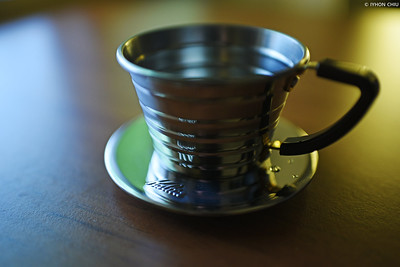
What makes this method unique is the flatbed for the coffee grounds. The grounds sit on the base for much longer and the water is more evenly poured resulting in optimal extraction.
Kalita is gaining immense popularity nowadays due to the optimized extraction of flavors from coffee grounds. If you have some love for the manual brewers, do forward a step to have it in your collection.
Here is our complete Kalita Wave brew guide for details.
5. Cold Drip Brewing
Probably you all have heard about this method, but did you ever tried it? Beware, it might become your favorite once you have tested it for your taste buds.

In this method, the filtered water is slowly dripped over the coffee grounds for a longer span of time like overnight or even a day. It all depends on how you like the results. The caffeine here is slowly infused into the resulting outcome, and believe us, it’s definitely worth the wait.
Moreover, the cold-brewed coffee can be kept in the refrigerator for over two weeks. So once you have brewed it, you can keep it for long and won’t need to brew again and again for some time.
And note, cold-brewed coffee is not the same as iced coffee in any way.
Read our complete detail about the cold drip brew method.
6. Nitro Cold Brew
Nitro Brew is derived from cold-brewed coffee and it’s fun making it and yes, it tastes like the next level. In the last few years, it has gained immense popularity, especially in cafes.

It is made by infusing Nitrogen into the cold-brewed coffee using the gas dispensing system. You can easily prepare that at home but need that dispensing system to infuse gas.
With the tiny bubbles of gas, Nitro cold brew tastes like a pint of beer with a sweet texture. If you don’t like to brew it at home, try to find them at some grocery stores near you in tin packs.
Learn how to make Nitro cold brew coffee at home
Immersion/Steeping
The act of immersing coffee grounds into hot water for a certain period of time is known as the Immersion Brewing technique. French Press, Aeropress, Clever, and Turkish coffee pots are the most common gears used for this technique. You can notice as in both methods, coffee grounds are left steeped in hot water for a certain period of time.
These methods have their own preferences over the other and the resulting brew will be quite different than the drip or espresso methods. We need mostly coarser coffee grounds in immersion brewing whereas when contact time between coffee and water, grounds used can be a little finer. But most importantly, the grounds used should be of uniform size and so, using a good quality grinder is a must.
7. Clever Dripper
Somewhere close to the Pour Over Method, this method installs a clever stopper on the bottom of the Cup that pauses the extraction and allows full extraction of flavors. It works on the principles of Immersion Brewing, like ways French Press. This method creates no mess no fuss on the table.
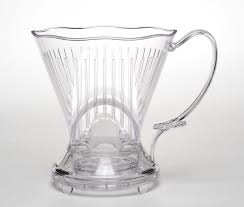
For this method you will need, a Clever Drip Brewer, 20 gm ground coffee (Medium Coarse), 4 Filter Papers, and 300 ml of water. Now, pre-heat the Dripper by passing warm water. Place filter papers and put the grounded coffee in them. Pour the warm water evenly all over the coffee and take a break for 1 minute. After that, submerge the floating grounds and stir a little. Now wait for 1.30 minutes more and your coffee is ready. Place the brewer above the serving cup and the stopper will open. Enjoy your coffee!
Here is our step-by-step guide on How to use a Clever Dripper!
8. French Press
Although it’s a simple brewing method, it’s easy to get the French press wrong. If you’ve ever tried making it with pre-ground coffee from the grocery store you’ve probably been discouraged when the resulting brew tasted something like wet sawdust. But with a little attention to detail, you will soon see why so many coffee lovers rave about the French press. It’s a portable brewer, so you can take it anywhere you go.
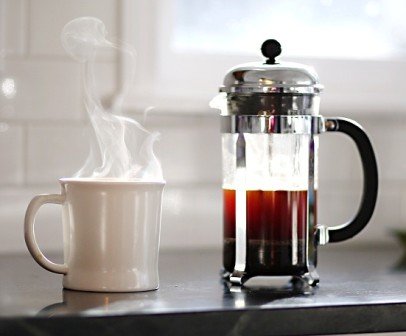
The most important factor is getting the grind right. You want the grind to be quite coarse for French press coffee – if your coffee grinder has a “French press” setting, you’ll see that it’s the coarsest setting, or close to it. You’ll need about 2 tablespoons of ground coffee for each 8-ounce cup, a measurement you can adjust according to your own taste.
Learn with our step by step guide about How to brew with French Press
9. Siphon/Vacuum Pot
This method was invented in the mid 19th century and is now coming back into style. Siphon brewing optimizes the water temperature without the need for thermometers, but this method owes a lot of its popularity to its visual appeal. The beakers and burners and gravity-defying liquids will make you feel like an alchemist!
Siphon brewing can use either your stove-top or a small butane burner as a heat source, with the butane burner being a somewhat quicker option. There are plenty of expensive siphon pots on the market, but you can get perfectly good results without spending a lot of money on equipment.

Here is our detailed guide about using Siphon Pot!
Espresso Methods
The next level of brewing is Espresso where pressure is used. Most of us think that espresso can only be brewed using advanced equipment. But that is not the case. There are other cost-friendly brewers available that allow brewing by the pressure method. Moka pot and AeroPress are such examples.
Espresso extraction is performed by passing pressurized steam water through tightly packed espresso grounds resulting in a thick brown liquid topped with a yellowish foamed layer called ‘crema’. This drink is a base for many other drinks and so, brewing it incorrectly can ruin your hard work. It gets perfect over time by learning and practicing.
Below are the briefs of the most popular methods of pulling an espresso shot.
10. Espresso Machine
For many people, there’s just no substitute for real espresso. It’s a big undertaking and a major expense to buy an espresso machine and grinder and then to develop your barista skills, but for many espresso aficionados, this is in no way a drawback. Once you’ve chosen your equipment and set everything up according to specifications, it’s time to start experimenting.
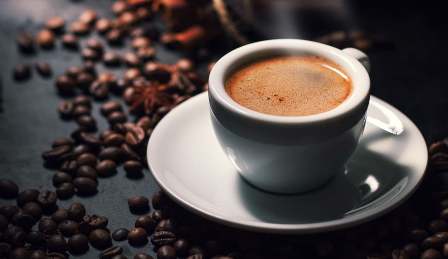
An espresso grind is very fine, about the texture of table salt. Grind about 20 grams into your portafilter for a double shot and level it off with your finger. Tamp it evenly and firmly with a good tamper – this will take practice. Some people even practice using a bathroom scale to see what 30 pounds of pressure feel like! Run some hot water through the group head to make sure the temperature is hot enough before attaching the portafilter and positioning the cup. When you activate the brewing process you should see a stream of dark coffee that gradually gets lighter in color and tapers off after about 25 seconds.
A skilled barista will know when the grind needs adjusting, or how to use the tamper to compensate for other factors. Don’t be surprised if your early creations don’t taste as good as you would like. Just keep at it, experiment, and be patient.
Here is a guide about, How to pull the perfect espresso shot!
11. Moka Pot
Practically every kitchen in Italy has at least one of these little coffee pots. Both the iconic octagonal design and the more streamlined Stainless Steel Mokas’ have become commonplace in American homes too. The coffee they make is not quite espresso, but it’s a pretty decent approximation if you’re not ready to invest in an espresso maker yet.

Grind your beans a little finer than you would for drip coffee, but not as fine as for espresso. Fill the bottom pot with water up to the level of the relief valve. Drop in the filter, making sure that the water doesn’t seep up into the filter basket. (If it does, pour out a little of the water.)
Fill the filter basket loosely with ground coffee so that it is slightly rounded. Be careful not to pack it down, as the Moka is not designed to deal with this type of pressure and the results could even be dangerous. Brush away any stray coffee grounds from the top of the filter.
Screw on the top part of the Moka firmly, but don’t over-tighten it. Put the pot on medium heat so that the brewing process is gentle and gradual. Remove the Moka from the heat after it starts getting noisy; you’ll get better coffee if you don’t worry about trying to get every last drop of water out of the bottom chamber.
Enjoy your coffee black or with sugar in a demitasse cup, or use it to make delicious lattes.
If this method interests you, why not go to our guide about How to use a Moka pot.
12. AeroPress
This method is the youngest of all being invented in 2005 and so people are still doing experiments with this brewing method for improvisation. This method makes a full-bodied cup that tastes rich and a bit sweet. Numerous Aeropress competitions happen around the world and every method contains some variation.
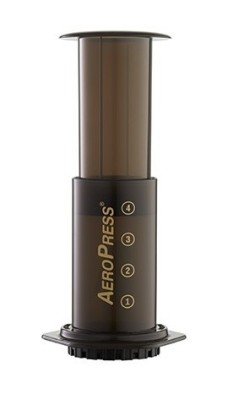
For this method, you are required to have an Aeropress brewer, of course, an Aeropress filter, a stirring paddle, fine ground coffee, and a brewing vessel.
Read our step-by-step guide about brewing with an Aeropress!
Boiled Coffee
13. Turkish Coffee
This is another popular brewing method for people who like very strong, espresso-like coffee but don’t want to indulge with bulky and expensive equipment. There’s a lot of disagreement about the “proper” way to make Turkish coffee. This is just one method out of many, but it will give you a starting point.
Turkish coffee uses the finest grind you’re likely to see in coffee brewing. At a couple of settings finer than espresso grind, it almost looks more like flour than ground coffee. You need a good-quality home grinder to accomplish this.
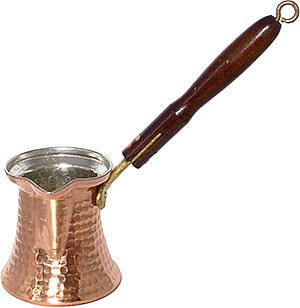
The only other equipment you’ll need is a Turkish coffee pot, also known as an ibrik. This is a small metal pot, traditionally made of hammered copper, attached to a long handle. It’s best to serve Turkish coffee in straight-sided demitasse cups to maximize the foam and allow the grounds to settle. You will also need a heat source like a butane burner or an electric or gas stove.
If you really want to go authentic or want to tone down the strength and intensity of the brew, adding spices such as cardamom, anise, or a sweetener such as an easily dissolvable sugar can be added. In fact, sugar is almost considered part of the process. The famous old proverb, “Coffee should be as black as hell, as strong as death, and as sweet as love” refers to Turkish coffee, and you’ll note the sweet part.
Learn with our detailed step-by-step guide for brewing Turkish coffee!
14. Cowboy Coffee
Our next method is pretty simple and is used by outdoor people during camps where they won’t have access to electricity and their bulky equipment.
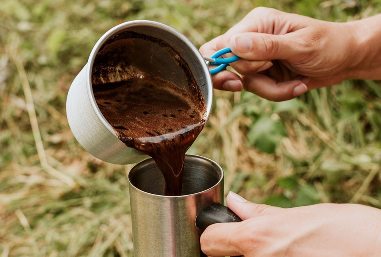
This method simply works by pouring water into a pot and heating it for a while. After a couple of minutes, put coarsely ground coffee into the pot and let it come to a boil and the grounds settle to the bottom. Now slowly pour the coffee into your mug.
So, nothing fancy is required here and things can be easily reached for in your kitchen.
Wrapping Up
Though we have left few methods of brewing, the above we covered are the most commonly used and the resources are easily available at most places. Still, the most commonly used methods are Drip and Espresso as specialized brewing equipment for these do most of the manual work. People are diverted most to the automated era due to time constraints but real coffee aficionados still prefer the manual methods.
Resources
- https://porch.com/advice/coffee-at-home
- https://www.ncausa.org/About-Coffee/How-to-Brew-Coffee
- https://blog.paleohacks.com/coffee-brewing-methods/
